My grandmother was 73 when she made the trek to see the mountain gorillas of Rwanda. It was something she’d always wanted to do and, when my intrepid aunt suggested that they go, she gamely agreed despite worrying that it would be too physically taxing for her.
I don’t remember much about the story of their trip besides my grandmother saying, ‘I made it up those mountains only through Myprodol, Voltarin and prayer.’
Her words came back to me as my friend Darrel and I wheezed our way up the mulchy slopes of Volcanoes National Park. The earth was black and loamy, bursting with fertility and oversized earthworms, and sweat drenched our shirts. We were likely walking on the same mountain range as my grandmother had done all those years back. I imagined her determined frame hunched over the path as we were, one foot in front of the other, and at the back of her mind the same burning question: Would we find them?
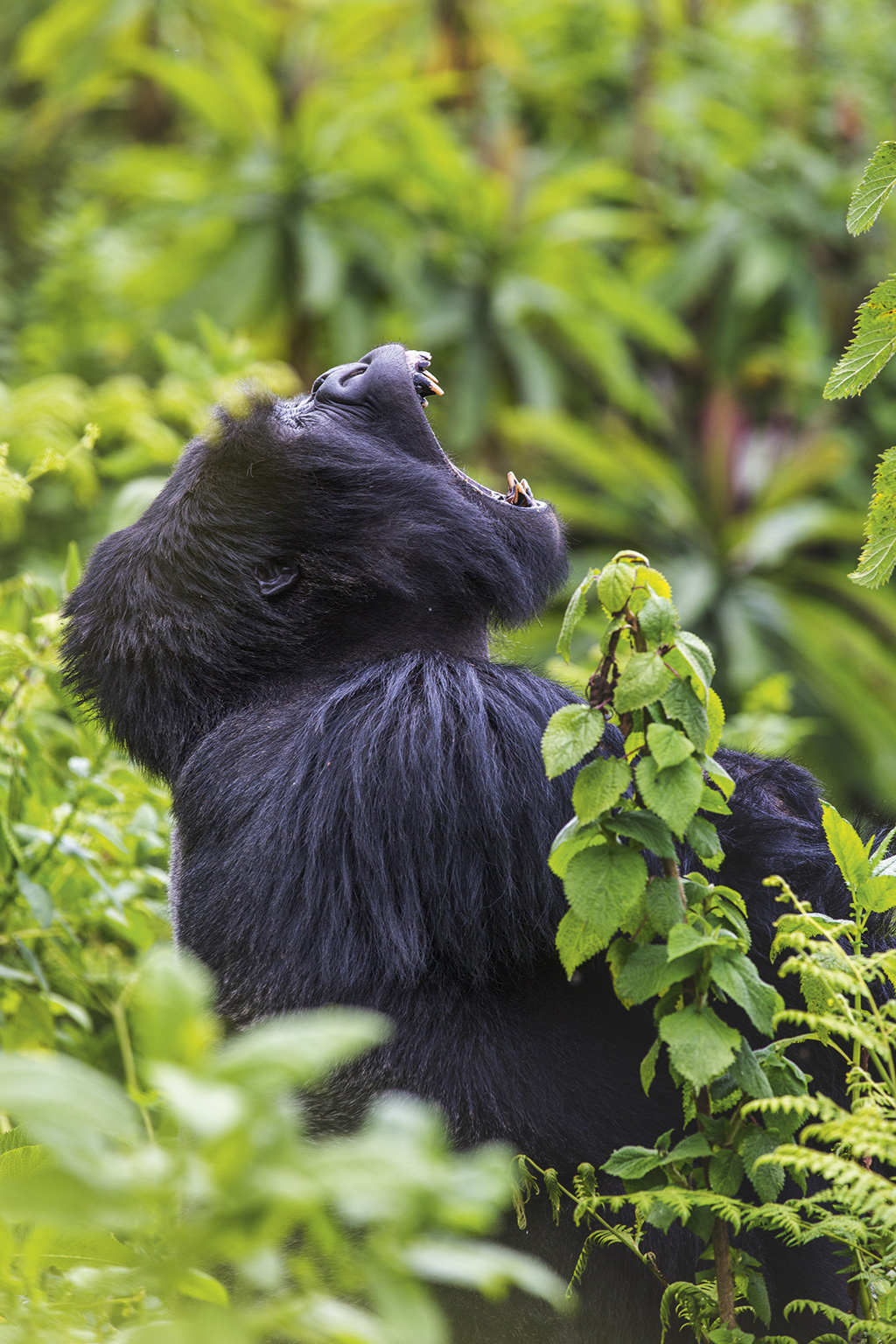
Mountain gorillas eat up to 30 kilograms of leaves and ground vegetation a day. Image credit: Teagan Cunniffe
See, buying a gorilla permit does not guarantee a sighting in your allocated time. There are 10 gorilla families in the Volcanoes National Park, an area of 160 square kilometres and home to six volcanoes, three of which are still active. Endangered golden monkeys swing through its depths and jungle elephants walk quietly between trees. There are bushbuck, black-fronted duikers and buffalo, but the main reason for visiting is the gorillas. These primates bring thousands of tourists through Rwanda’s borders each year and are revered among the population as both an employment opportunity and a symbol of hope after the atrocities of the past. Gorillas adorn bank notes and gaze benignly from billboards.
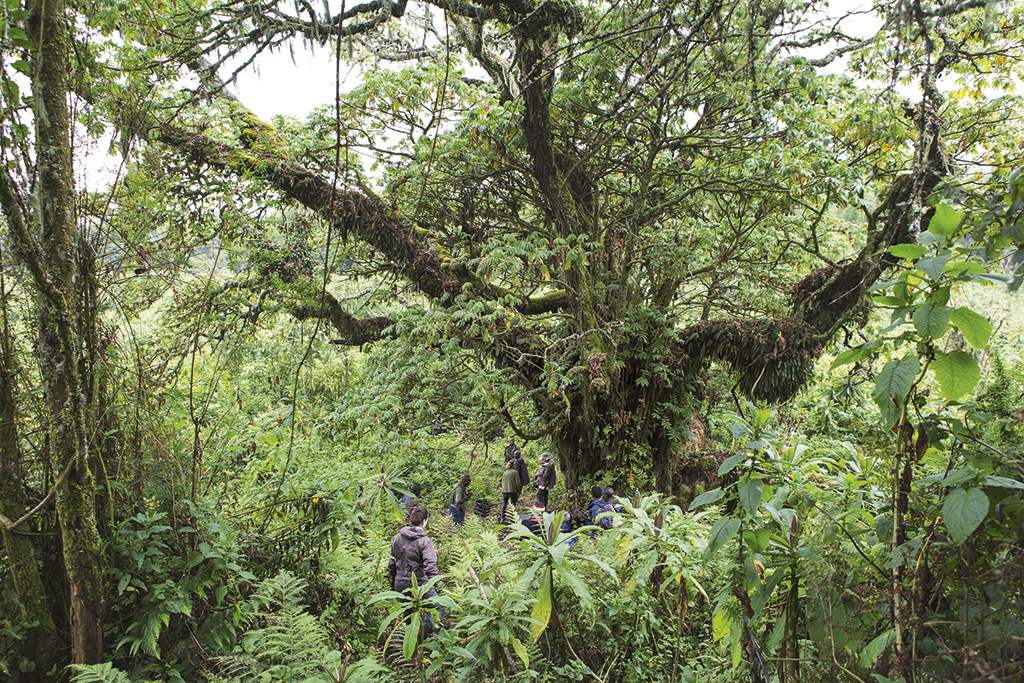
Due to high moisture levels, the dense forest is coated with moss and lichen. Image credit: Teagan Cunniffe
In 1967, world-famous primatologist Dian Fossey predicted that wild gorillas wouldn’t see the turn of the 21st century. After giving her life – literally – to protect these great apes, she’d be elated to learn that, despite the odds, their numbers have grown to more than 1,000 individuals – 340 of which can be found in Volcanoes. This park is bordered by the Virunga National Park in the Democratic Republic of the Congo and Mgahinga Gorilla National Park in Uganda, and altogether they form the 650-square kilometre Virunga Massif.
It’s not often that endangered numbers increase, and the success of the mountain gorillas is linked with efforts to involve the community, giving them a sense of ownership over Rwanda’s flagship animal. Locals are trained as guides and porters, and poachers are re-educated before being employed as trackers, encouraged by a steady income and a purpose. François Bigirimana, our guide, was a perfect example of how tourism had changed lives.
Growing up in the foothills of Mount Sabyinyo and Mount Bisoke, his childhood was typical of the area. Days were spent herding cattle, setting snares for meat (gorillas were sometimes a by-catch) and defending his parents’ potato fields against the marauding apes. After training as a guide, his perception of these beasts changed from carb-loving freeloaders to that of important income-generating livelihood.
His love for the gorillas flourished, evident in the chirruping way he mimics their sounds and calls each by name. He was awarded ‘Rwandan Guide of the Year,’ with a prize that took him to the concrete jungles of Tokyo, returning with widened eyes and perspectives. ‘Without the gorillas,’ he said, ‘I’d still be working those fields.’
Instead, he was just a short way up the path ahead, muttering into his radio in communication with the . anti-poaching guards who protect the gorilla families that live in this park. Giant lobelia grew oversized above us while lichen patterned rocks and tree trunks. A storm rumbled in the distance. We fervently hoped that we’d see the Sabyinyo family before the rains hit.
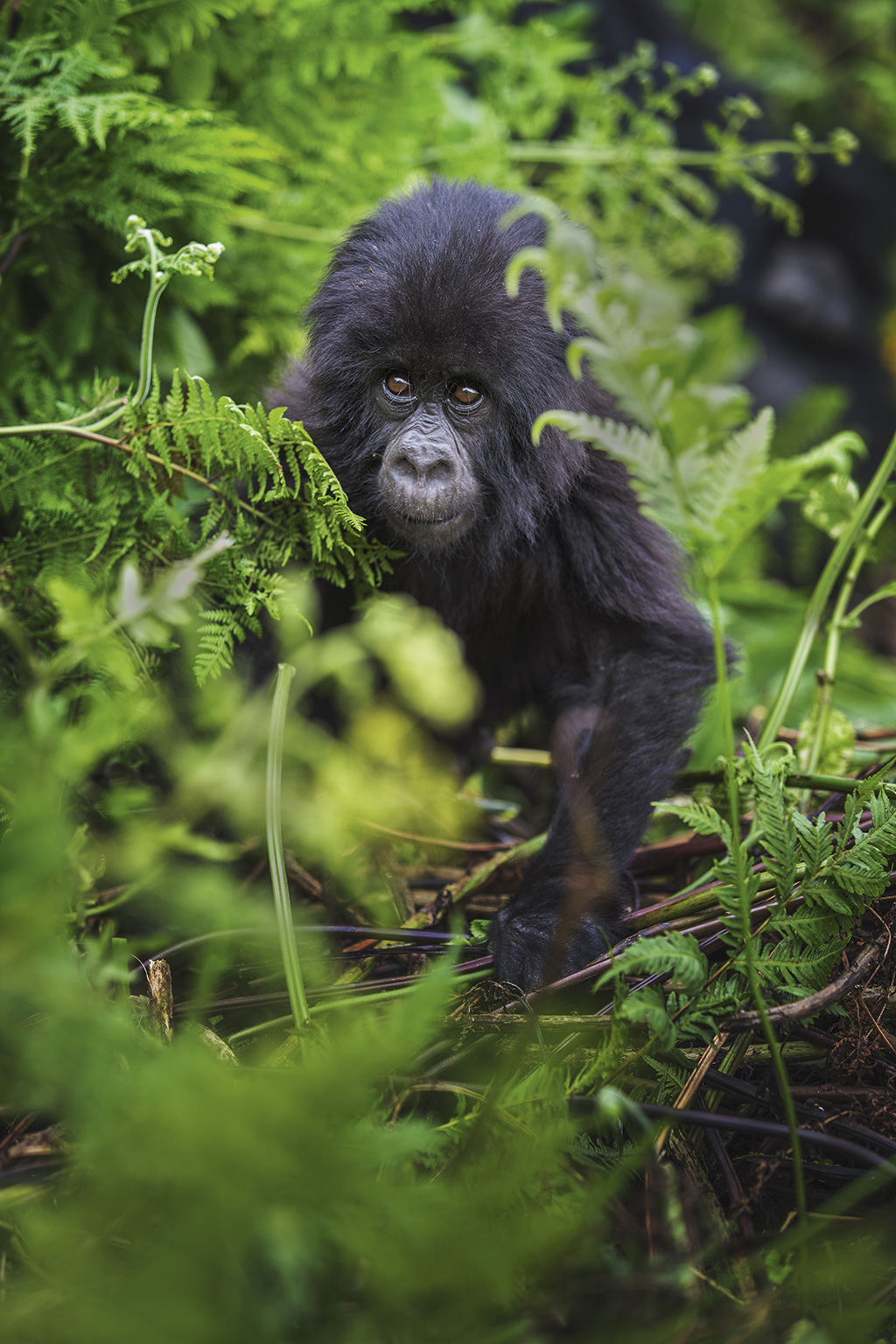
Newborns weigh up to two kilograms and spend their first four years mostly on their mother’s back. Image credit: Teagan Cunniffe
There were six of us in the group, all of varied nationalities. Gaius from Uganda had made this journey multiple times, and Sally the American was attempting it with only one lung.
We passed the sign leading to Fossey’s grave. What I know of her story is based on the movie of her life, Gorillas in the Mist, and it was sobering to be in her final resting place alongside her beloved gorillas.
After taking in the view we continued, before François raised his hand, calling us to a sudden stop beneath the twisting limbs of an African redwood covered with moss. We looked at each other. Was this it? Had we found the gorillas, or had François called a time-limit on the hike?
He swung his panga wide, clearing stinging nettle from the path, and gestured for us to follow him.
And there they were.
Four round-bellied females reclined in the undergrowth, their bodies making hollow coves in the foliage. A mother sat bent over her baby, holding it close with forehead pressed into its fur. Another baby tottered towards us. It had wispy hair on its head and big, round eyes in its old-young, wrinkled face.
We hardly dared to breathe, hoping that it would stumble on over to our shoes and onto our laps, but François hissed at us and we moved quickly out of reach, remembering that human touch can carry deadly bacteria and disease. A silverback sauntered by, his sloping back and broad shoulders beefed with muscle. Trapped up against the mountain, we leaned back as far as possible and held our breath as he passed. Stinging nettles were forgotten in the tension. He gave us a haughty stare and grunted before baring his teeth in a gum-black yawn.
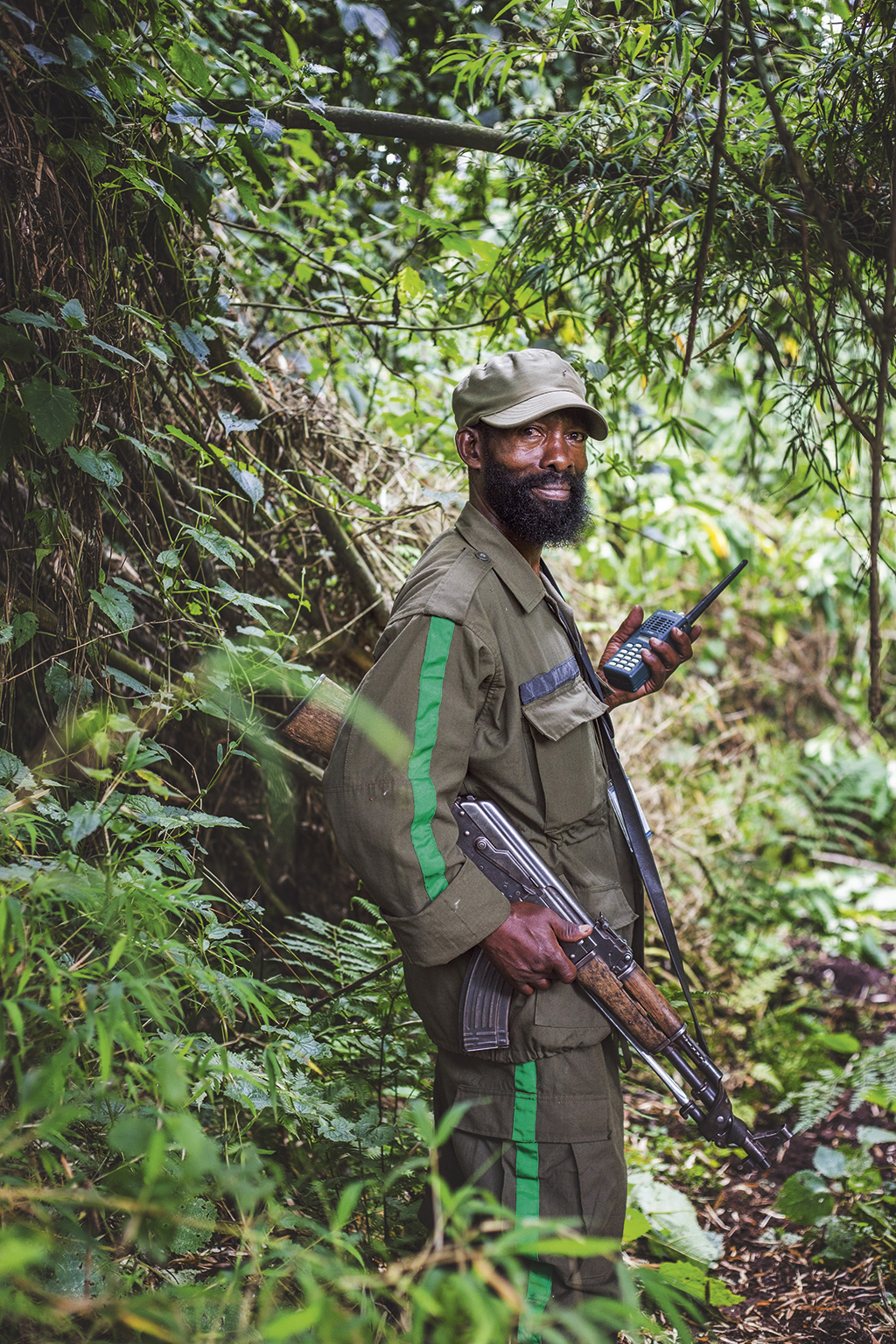
Daily protection by rangers has effectively boosted gorilla populations. Image credit: Teagan Cunniffe
We sat on our haunches and watched as the gorilla family mostly ignored us, privy to the natural flow of their day. Our allocated hour felt like all of five minutes. Before we knew it, François was calling us back to our daypacks and onto the return journey. Back down the mountain, we were given a certificate with our names on it, proving we’d seen the gorillas. It all felt a blur.
After returning to South Africa I phoned my grandmother to compare experiences. Her voice became animated.
‘That was 10 years ago already. Gosh, I can’t believe it! Hang on, let me get my notes,’ she said, before returning to tell me about the family that she’d sat with. They’d been just eight metres away. A psychologist by profession, she’d been fascinated by the human-like behaviour they’d exhibited – or perhaps it’s the ape-like behaviour that we exhibit? That we share 98 per cent of our DNA with these creatures is apparent.
With time, you forget the discomfort of travel – the labouring up a hill with one lung, or propping yourself up with painkillers, or paying the hefty price of the permit – and instead remember the good bits, which continue to enrich your life.
‘And the guide said if the gorillas charge, you must stand still, gradually crouch and look down submissively,’ she said with a delighted laugh, reliving the adventurous memories on an otherwise-mundane Monday morning.
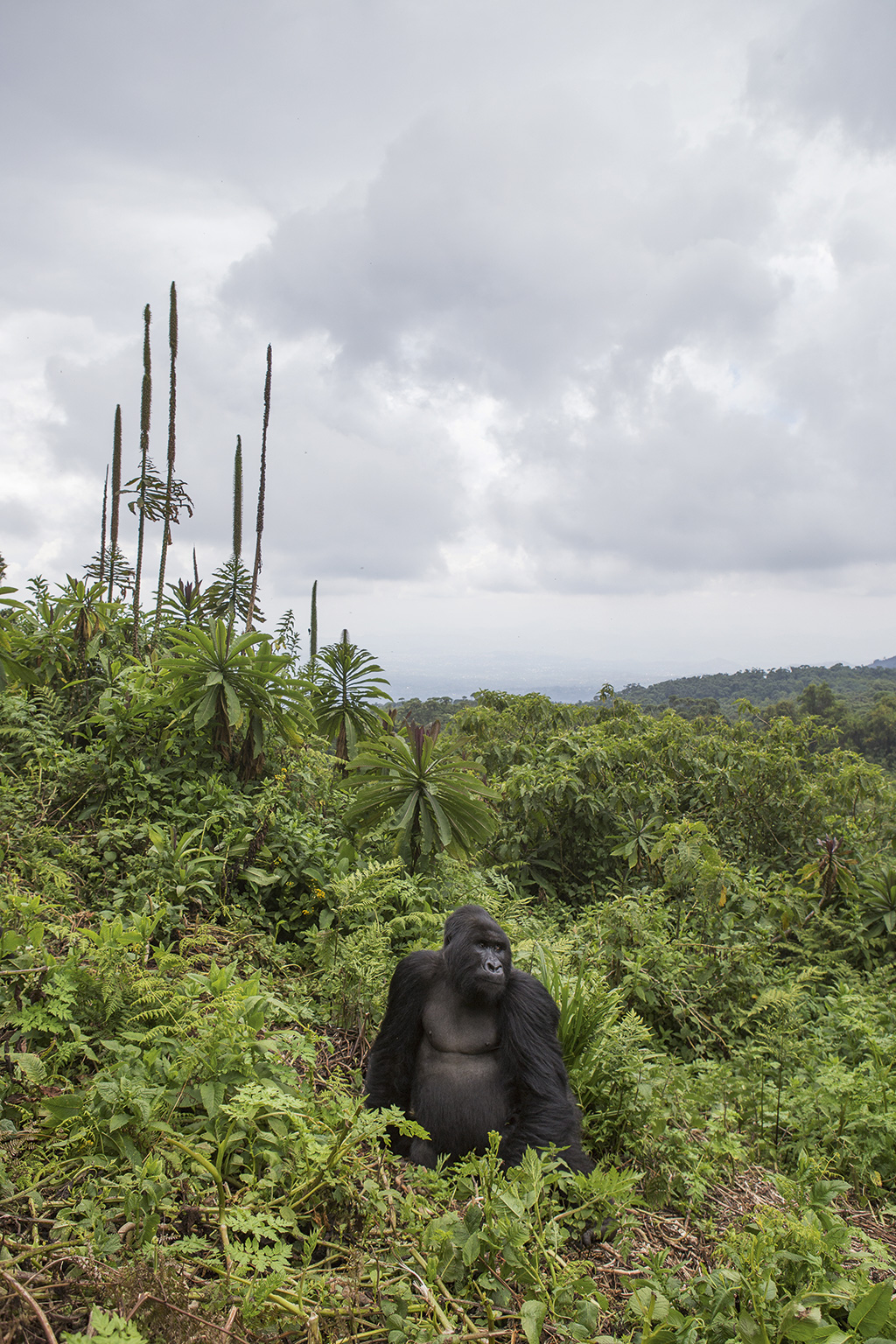
As males mature, their backs begin to turn silver. Guhonda (at 220 kilograms) is the park’s largest silverback. Image credit: Teagan Cunniffe
Plan Your Trip
Getting There
SAA and Rwandair Express offer flights from Joburg to Kigali, from around R5,000.
Why Rwanda?
Uganda and DRC are much cheaper (around R9,000 for a permit), but Rwanda is worth a visit in itself. Kigali is clean and safe, and the Genocide Memorial is a harrowing but important experience.
Stay Here
You need to be at the park by 7am, so stay overnight near Musanze and arrange a transfer with your hotel. La Palme is a three-star hotel overlooking Sabyinyo Volcano, so you can see where you will be trekking the following day. Rooms are simple but clean, from R550 per person B&B.
lapalmehotel.net
Do This
Gorilla trekking permits in Rwanda cost R20,980, and proceeds benefit the community directly. A 30% discount is offered if you add three days in another Rwandan national park during the low season from November to May.
rwandatourism.com
You may also like
Related Posts
Whether you’re in a two-person hiking tent eye-balling the peaks or a full caravan in...
read more
Gabrielle Jacobs forsakes the Breede Valley’s winelands for some Cape nature at Vrolijkheid Nature Reserve,15km...
read more
A new guided hike in the Western Cape known as the 16 Mile Beach Challenge...
read more